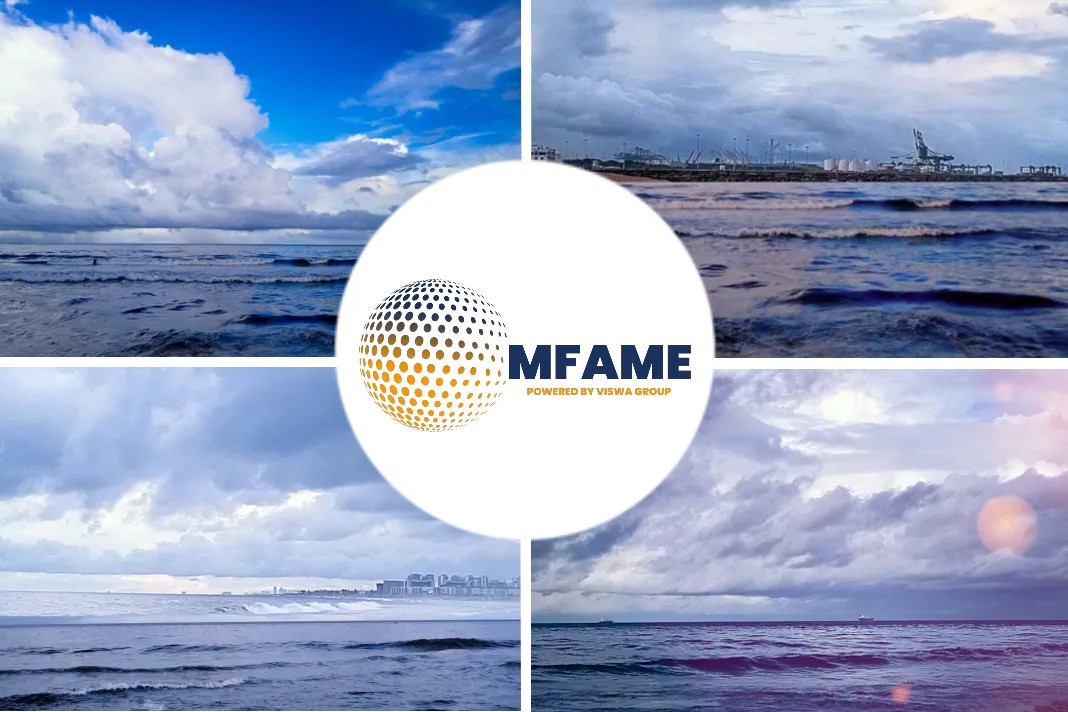A recent news article published in the barrent observers states that two aging oil tankers are breaking their way through Arctic sea-ice.
The journey of Svaytoy Petr
The Svaytoy Petr on the 23rd of June set out from the far eastern Russian port of Petropavlovsk with course for Arctic waters. About 14 days later, the 127 meter long oil tanker reached the Bering Strait.
It is expected in Arkhangelsk on 25th of July, data from MarineTraffic show.
The ship that is built in 1992 has only limited ice-protection and needs icebreaker assistance to break through the ice sheet that still covers major parts of the Arctic shipping route.
Help is on the way. Nuclear-powered icebreaker Sibir is breaking its way through the East Siberian Sea and is expected to meet the Svaytoy Petr in the course of the next 48 hours.
On it tail, the Sibir has 20 year old oil tanker Ice Eagle that is on its way from Murmansk to Pevek.
First in this year
The two aging oil tankers are among the first ships that sail across the Northern Sea Route this year. So far, only LNG carrier Nikolai Yevgenov has sailed transit across the route. The powerful natural gas carrier in mid-June set out from Sabetta in Yamal and sailed eastwards towards Asian markets. The ship sailed most of the route independently without icebreaker escort.
As of the 10th of July, there were only four vessel on transit voyages on the remote route. In addition to oil tankers Svaytoy Petrand Ice Eagle, LNG carrier Eduard Toll and Boris Davydov are in the area.
It is mid-summer, but major parts of the waters that connect the Bering Strait the east with the Barents Sea in the west remain covered by sea-ice. Ice maps from Russian meteorological service Roshydromet show that ice layers in late June were most comprehensive in the area of the Vilkitsky Strait, the New Siberian Islands and in the Chukchi Sea.
Despite the severe sanctions imposed by the international community on Russia following its war against Ukraine, ambitions for the Arctic shipping remains high in Moscow.
Top Russian government officials argue that the sanction regime will only making shipping on the Northern Sea Route more important. In early June, Russian Deputy Prime Minister Yuri Trutnev underlined that better transport corridors to markets in Asia are needed as western markets close.
At the same time, Aleksei Chekunkov, the Minister of the Far East and Arctic, said that Russia’s path towards the East goes through the Arctic.
“Many people have in this forum spoken about the turn toward the East. It can only happen through the North,” the minister said during the recent St.Petersburg Economic Forum.
Shipping on the Northern Sea Route
According to Chekunkov, shipping on the Northern Sea Route will by year 2035 add as much as 35 trillion rubles to Russian GDP. The growth is to be driven be exports of oil, natural gas and coal.
Following a decree from the Kremlin, the Russian government has over the past years sought to boost shipments on the far northern route to as much as 80 million tons per year already by 2024. However, that target will not be reached.
In 2021, about 35 million tons of goods were shipped on the route.
Several Russian industrial projects in the Arctic, among them the Arctic LNG 2, is in jeopardy following the sanctions and Asian shipyards that are to build the ice-class vessels needed for Arctic operations are pulling out of contract with Russian companies.
Did you subscribe to our daily Newsletter?
It’s Free! Click here to Subscribe
Source: The Barents Observer
















